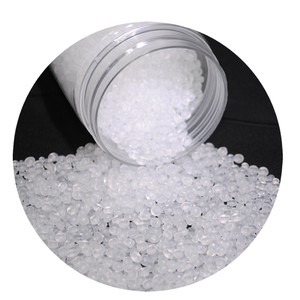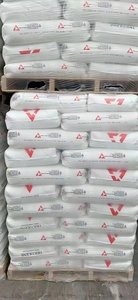
All categories
Featured selections
Trade Assurance
Buyer Central
Help Center
Get the app
Become a supplier

(43016 products available)














pp pe recycl line are indispensable in the field of industrial machinery, more especially in the domain of plastic and rubber processing. Through extrusion, these devices are designed to turn unprocessable plastic products into usable objects. Heat and pressure help pp pe recycl line melt and shape plastic into different forms like pipes, sheets, and profiles. In manufacturing environments, where exact control over the extrusion process is vital for obtaining required product standards, pp pe recycl line is absolutely indispensable because of its adaptability and efficiency. The design and utility of pp pe recycl line keep developing as sectors change to provide better sustainability and production.
In the field of plastic processing, numerous forms of pp pe recycl line are accessible, each suited for a particular use. The most typical are single-screw extruders are noted for their simplicity and efficiency in managing a wide spectrum of materials. They are perfect for operations needing consistent and homogeneous material flow. Conversely, twin-screw extruders fit more complicated materials and procedures since they provide more flexibility and mixing capacity. These extruders give improved control over the extrusion parameters and can manage more quantities. Furthermore, there are specialized pp pe recycl line meant for particular jobs, such as co-extrusion, in which many layers of material are fused into one good. Every type of extruder has special benefits that let producers choose the most suitable machine for their requirements.
The main function of pp pe recycl line is to continuously extrude plastic material, turning it from solid to semi-liquid and forming it into desired shapes. These machines have strong motor systems, precision screw designs, and movable temperature controls among other key traits. Ensuring consistent heating of the material depends on temperature management, which also helps to prevent flaws in the final product. Often customized to certain materials, the screw design affects the melting and mixing efficiency. Usually ranging from 35 to 40 hp, motors in pp pe recycl line supply the required power to drive the extrusion process smoothly. Advanced extruders might also have automated tools that enhance real-time monitoring and production - optimizing changes possible. Such qualities support the constant quality and high throughput needed in industrial uses.
The materials handled under pp pe recycl line are varied and include polypropylene, polyethylene, and PVC among other polymers. The design of the extruder enables each material to have particular handling and processing conditions. Extrusion is a common introduction of additives including colorants, stabilizers, and fillers used to improve the end product's qualities. While fillers can boost the strength and durability of the extruded material, UV stabilizers are included to improve resistance to solar exposure. The extrusion process is affected by the materials and additives; each combination calls for exact management to get the best outcomes. As sustainability takes the front stage, pp pe recycl line is processing biodegradable plastics more and more as a green substitute for many uses.
Good application of pp pe recycl line is knowing the capabilities and constraints of the machine. The materials and goods being produced will determine the suitable extruder type operators should use. Both preventing downtime and ensuring the extruder runs effectively depend on regular maintenance. This covers standard inspections on temperature controls, motor performance, and screw and barrel condition. Maintaining product quality depends on correct extruder setting calibration; changes made depending on material qualities and intended output will help to preserve this. Additionally, training for operators is crucial for it enhances maximization by leveraging the extruder's features and automated powers. Following best practices in operation and maintenance helps manufacturers to produce consistently high-quality outputs from their pp pe recycl line, hence improving productivity and profitability.
Choosing pp pe recycl line requires careful consideration of the particular needs of the manufacturing process. The kind of materials required are absolutely important. Different plastics, such as polyethylene, polypropylene, or PVC, demand different extrusion conditions, which directly affect the extruder choice. Furthermore, the production volume is very vital. Twin-screw extruders' improved mixing capacity would help high-volume operations; single-screw extruders might be more appropriate for smaller-scale manufacturing. Achieving effective and premium output depends on the material's fit for the extruder's parameters.
One further thing to take into account are pp pe recycl line's design elements. Advanced automation technologies included in modern extruders give real-time monitoring and control over the extrusion process. Digital temperature controls, precise screw designs, and strong motor systems can all greatly affect manufacturing efficiency and product quality. Consistent with sustainability objectives, these components also help to lower energy use and material waste. To guarantee buyers choose an extruder that provides the optimum performance for their application, they should assess these characteristics in respect to their operating needs and long-term ambitions.
Usually employed for basic extrusion operations, single-screw pp pe recycl line provide simplicity and cost-effectiveness. They are ideal for constant flow processing of a variety of materials. Twin-screw extruders are ideal for complicated materials and operations since they offer improved mixing and adaptability. For specific uses, they provide better control over extrusion parameters and can manage more quantities.
Regular maintenance and calibration should be the main priorities of operators aiming for the best performance of pp pe recycl line. This covers verifying temperature controls are operating precisely, inspecting the condition of the screw and barrel, and tracking motor performance. Maximizing the capabilities of the equipment can also depend on teaching operators on its limits and possibilities. Following these guidelines helps one to produce consistently high-quality results.
When evaluating the sustainability of pp pe recycl line, material waste reduction and energy efficiency should take the front stage. Many contemporary extruders have technologies meant to maximize material use and reduce energy consumption. Processing biodegradable plastics also helps to support environmentally responsible manufacturing. Choosing extruders meant to assist sustainability and assessing the environmental effect of the extrusion process will help to improve the ecological footprint of your business.
Indeed, pp pe recycl line can be tailored to meet particular materials and manufacturing specifications. Customizing screw design, barrel configuration, and temperature controls can help to better suit the qualities of the processed material. This guarantees effective mixing, melting, and shaping, so ensuring better quality and performance of the resultant good.
Operating pp pe recycl line might provide numerous difficulties like keeping equipment performance and controlling material consistency. Variations in material parameters could influence the extrusion process and call for exact control and corrections. Furthermore, if not quickly addressed, wear and tear on parts like screws and barrels could cause inefficiencies. Overcoming these obstacles and guaranteeing flawless operation depend critically on regular maintenance and knowledge of the design features of the extruder.